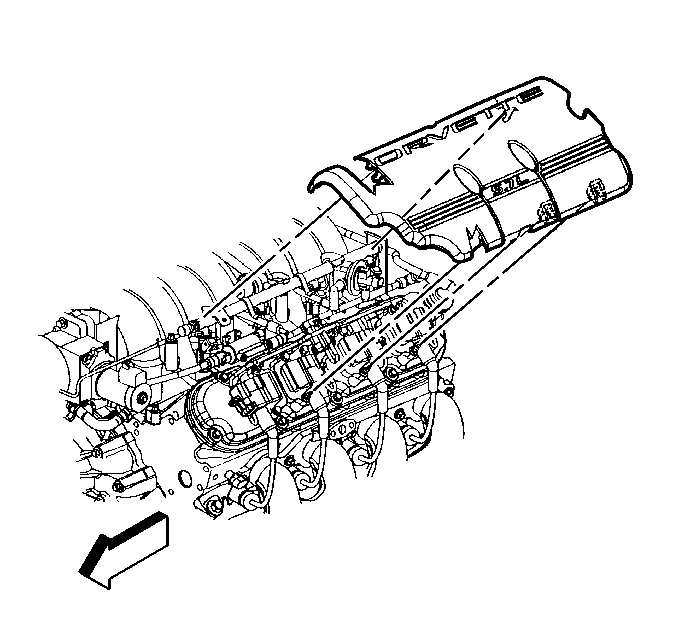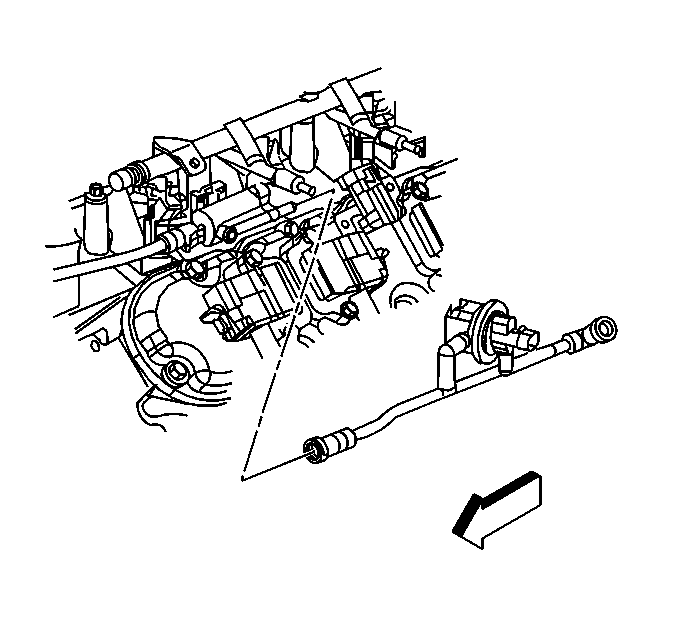For 1990-2009 cars only
- Remove the left fuel rail cover.
- Turn OFF the ignition.
- Remove the purge solenoid vacuum line and the vacuum switch from the vehicle.
- Remove the EVAP purge solenoid from the engine.
- Lightly tap the purge solenoid and the vacuum switch on a clean work area looking for carbon particles or carbon dust exiting either of the vacuum ports.
- If no carbon release is evident, reinstall the components and continue with the published service manual DTC procedures.
- If carbon is being released from either component, continue with this service procedure.
- Remove the right fuel tank, refer to Fuel Tank Replacement or Fuel Tank Replacement . Remove the charcoal canister from the vehicle. Refer to Evaporative Emission Canister Replacement .
- Ensure the main cylinder valve is turned off on the EVAP purge/pressure diagnostic station J 41413.
- Disconnect the black hose that connects the nitrogen cylinder to the cart J 41413 at the pressure regulator by unscrewing the knurled nut on the regulator.
- Using a section of vacuum line, connect one end over the open fitting of the J 41413 pressure regulator.
- Connect the remaining end to the purge solenoid end of the EVAP purge line at the vehicle.
- Turn on the main nitrogen cylinder valve and continue to blow any debris from the purge line for 15 seconds.
- Return the EVAP Pressure/Purge Diagnostic Station J 41413 to its original condition by re-installing the black hose disconnected in step 8.
- Manifold vacuum vehicles proceed with published service manual diagnostics.
- Using a scan tool display data parameter EVAP vacuum switch.
- Idle the engine at the normal operating temperature.
- Open the throttle until engine speed reaches 2000 RPM.
- If the EVAP vacuum switch changes state Go to Step 19.
- If the vacuum switch does not change state, repair the low source vacuum condition by performing a complete throttle body service. This includes the cleaning of the purge ports. Go to Step 14.
- If the EVAP vacuum switch does change state, proceed with the published service manual diagnostics.
- Connect the EVAP diagnostic cart J 41413 to the vehicle EVAP service port and turn the 4 position switch to Purge.
- Idle the engine at the normal operating temperature.
- Open the throttle until engine speed reaches 2000 RPM.
- Observe the H20 vacuum gauge on the EVAP cart. Vacuum should read greater than 15 in. H20.
- If the vacuum is less than 15 in. H20, perform a complete throttle body service. This includes the cleaning of the purge ports as outlined in the service manual. Go to Step 20.
- If the vacuum is greater than 15 in. H20, continue with the published service diagnostics.




